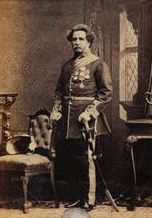Frederick Abbott (Indian Army officer) facts for kids
Quick facts for kids
Frederick Abbott
|
|
|---|---|

Major General Sir Frederick Abbott CB
by Camille Silvy, 1862. |
|
| Born | 13 June 1805 Little Court, Buntingford, Hertfordshire, England |
| Died | 4 November 1892 (aged 87) Branksome Park, Poole, Dorset, England |
Sir Frederick Abbott (born June 13, 1805 – died November 4, 1892) was an important British Army officer and engineer. He worked for the British East India Company, which was a powerful trading company that also had its own army in India. He became a Major-General and was known for his engineering skills and military service.
Contents
Early Life and Family
Frederick Abbott was born on June 13, 1805, in a place called Little Court in Hertfordshire, England. His father, Henry Alexius Abbott, was a retired merchant. His mother was Margaret Welsh.
Frederick was one of many children in his family. He had several brothers and sisters, including:
- Margaret (1801–1877)
- Major-General Augustus Abbott (1804–1867)
- General Sir James Abbott, KCB (1807–1896)
- Emma Abbott (1809–1875)
- Major General Saunders Alexius Abbott (1811–1894)
- Keith Edward Abbott, Consul General (1814–1873)
- Edmund Abbott (1816–1816)
Military Career and Achievements
Frederick Abbott began his military training at Addiscombe Military Seminary from 1820 to 1822. After his training, he was sent to India in 1823 to join the Bengal Engineers.
Service in Wars
Abbott served in the First Burmese War. In 1825, he showed great bravery in the Battle of Prome, where he was injured. Later, he became the chief engineer during the First Anglo-Afghan War. During this war, he was ordered to destroy a large market in Kabul as a punishment. He later said he felt bad about this action.
In 1841, Abbott was put in charge of engineering projects in the north-western parts of Bengal. He also fought in the First Anglo-Sikh War in 1846. He took part in the Battle of Sobraon, which was an important battle. For his actions there, he received an award called the Companion of the Order of the Bath.
Later Roles and Retirement
Frederick Abbott retired from active military service one year later. In 1851, he became the lieutenant-governor of Addiscombe Seminary, which was where he had trained. He was knighted in 1854, which means he received the title "Sir." In 1858, he was promoted to Major-General.
In 1859, he was asked to join the Royal Commission on the Defence of the United Kingdom. This group made important suggestions that led to a huge building program to protect British naval bases. After his college closed in 1861, he continued to serve on other important royal commissions.
Personal Life
In 1835, Frederick Abbott married Frances Cox. She was the daughter of Lieutenant Colonel Cox and the widow of Lieutenant Colonel Hubert de Burgh. Sir Frederick Abbott passed away in Branksome Park, Poole, in 1892. Both his wife and daughter had died before him.

